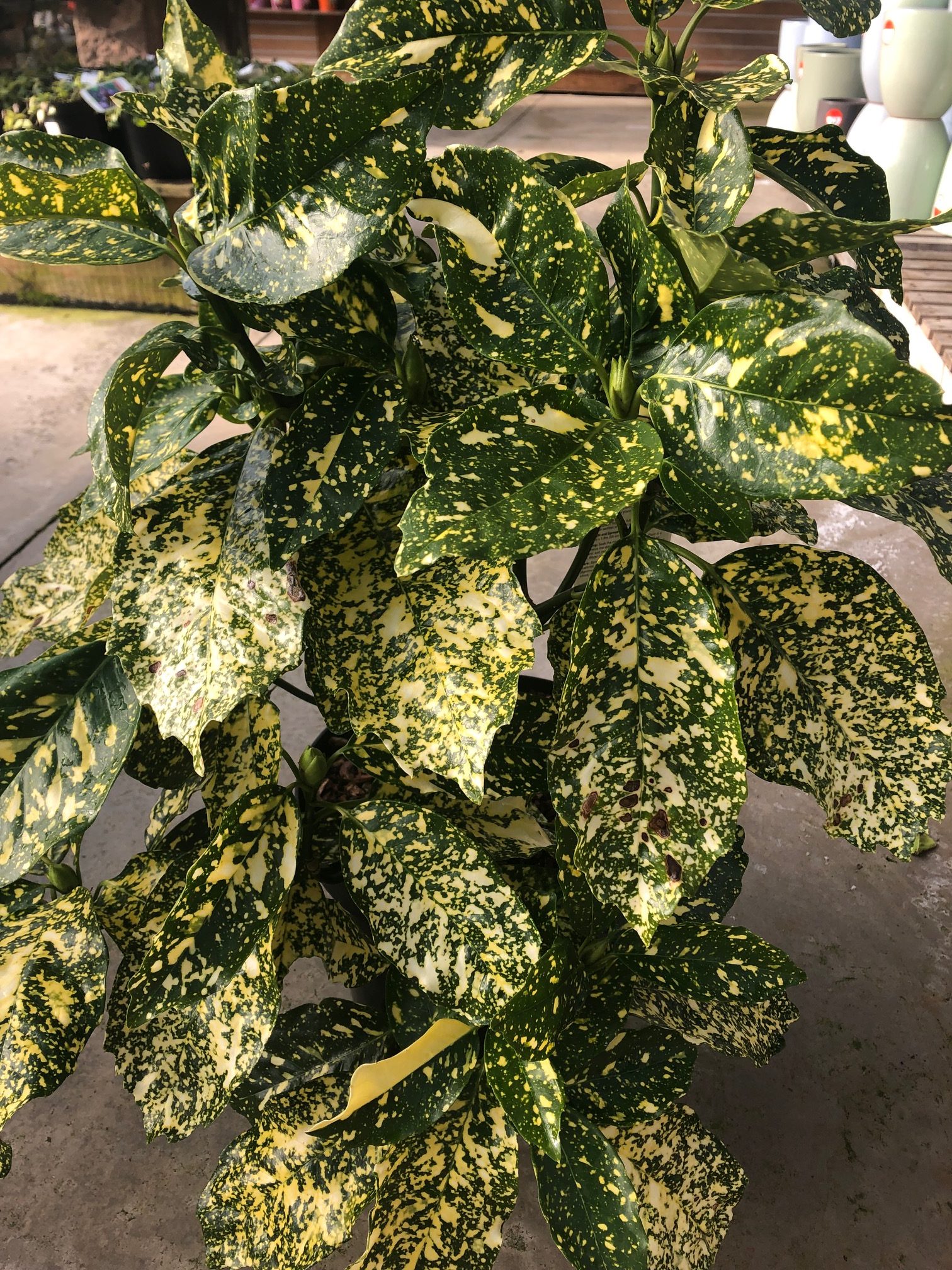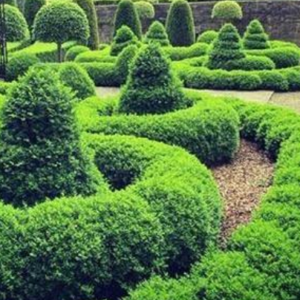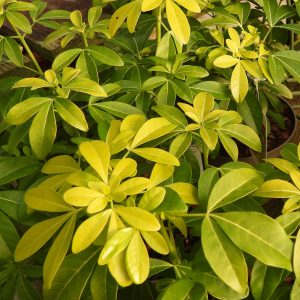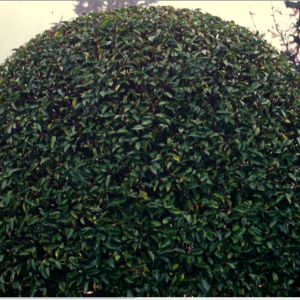Aucuba japonica Crotonifolia
Aucuba japonica Crotonifolia is a rounded shrub with glossy, yellow-speckled leaves.
Small purple-red flowers are followed by bright red berries. It flowers April to May, and fruits June onward.
Max Height 3m. Max Spread 3m. Full Sun/Partial Shade. Hardy.
MORE
Aucuba japonica Crotonifolia, commonly known as the Gold Dust plant, is a popular evergreen shrub that is native to eastern Asia, specifically Japan, China, and Korea. This shrub is well-known for its striking foliage, which features bright yellow-gold spots on a dark green background. In this article, we will take a closer look at the characteristics, cultivation, and care of Aucuba japonica Crotonifolia.
Aucuba japonica Crotonifolia is a slow-growing shrub that typically reaches a height of 6-8 feet and a spread of 4-6 feet. It has an upright habit with a dense, bushy growth pattern. The leaves are leathery and glossy, measuring approximately 3-8 inches in length and 2-4 inches in width. The yellow-gold spots on the leaves are scattered randomly, giving the shrub a unique and eye-catching appearance. In the late winter and early spring, Aucuba japonica Crotonifolia produces small, inconspicuous, purple flowers, which are followed by red berries in the Autumn.
Aucuba japonica Crotonifolia is a hardy shrub that is relatively easy to cultivate. It prefers partial shade to full shade and well-draining soil that is rich in organic matter. It can tolerate a wide range of soil pH levels, but it prefers slightly acidic to neutral soil (pH 5.5-7.0). This shrub is also tolerant of drought and can handle occasional dry periods once established.
Propagation of Aucuba japonica Crotonifolia can be done by taking stem cuttings or by layering. Stem cuttings should be taken in the summer or early fall, using a sharp, sterile blade to make a clean cut just below a node. The cutting should be approximately 4-6 inches in length and should include at least two nodes. Remove the lower leaves from the cutting and dip the cut end in rooting hormone before planting it in a pot filled with a well-draining potting mix. Keep the cutting in a warm, humid environment with bright, indirect light until roots have formed.
Layering is another method of propagation that can be used for Aucuba japonica Crotonifolia. In the early spring, select a low branch that is touching the ground and partially bury it in the soil. Make a small cut on the underside of the branch where it touches the ground, and apply rooting hormone to the cut. Cover the branch with soil and keep it moist until roots have formed. Once roots have formed, the branch can be cut from the parent plant and transplanted.
Aucuba japonica Crotonifolia is a low-maintenance shrub that requires little care once established. Water regularly during the first year to help the plant establish its root system. After that, watering can be reduced, and the plant can tolerate occasional dry periods. Fertilize in the spring with a balanced fertilizer, and mulch around the base of the plant to retain moisture and suppress weeds. Pruning can be done in the late winter or early spring to maintain the shape and size of the plant. Remove any dead or damaged branches, and cut back any branches that are getting too long or straggly.
In conclusion, Aucuba japonica Crotonifolia is a striking and easy-to-grow shrub that is a great addition to any garden or landscape. Its unique foliage and tolerance for shade and drought make it a versatile plant that can be used in a variety of settings. With proper care and maintenance, this shrub can provide many years of enjoyment and beauty.






Reviews
There are no reviews yet.